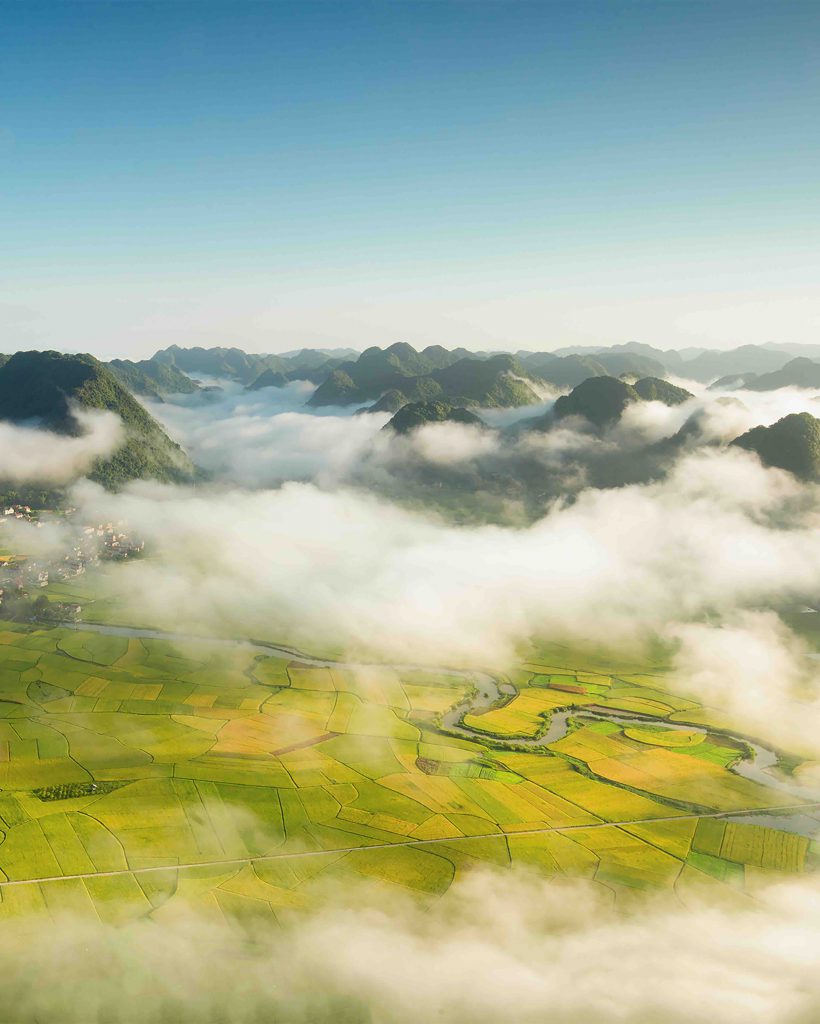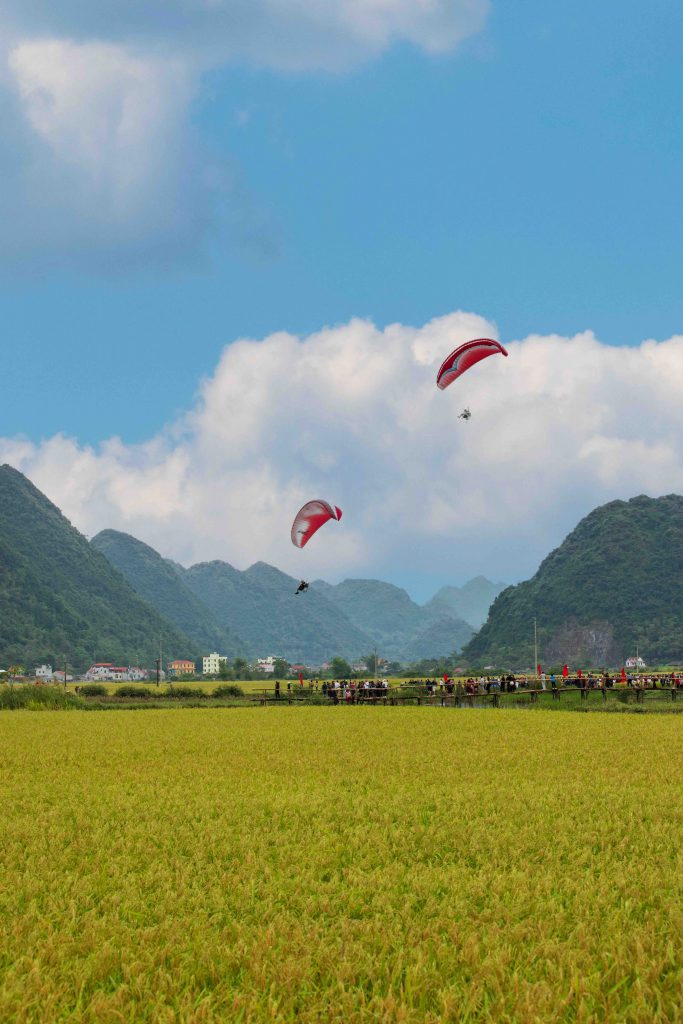Story: Minh Yilka
Photos: Dao Canh, Thuan Bui
Bac Son Commune was established on July 1, 2025, through the merger of Bac Quynh Commune, Long Dong Commune, and Bac Son Town of the former Bac Son District, in western Lang Son Province. This marks a significant milestone for a mountainous region long renowned for its distinctive geography and beauty, especially during the transition from summer to autumn.

Set in a basin encircled by overlapping limestone ranges, the Bac Son Arc lies at the crossroads of two distinct cultural regions: the midland traditions of the Northeast and the forested mountain culture of Viet Bac. Beyond its breathtaking landscapes, it holds deep historical significance and has long been home to diverse ethnic minority groups, most notably the Tay people.
The centerpiece of the region’s terrain is a valley ringed by undulating mountain ranges, forming a vast natural fortress that cradles hundreds of hectares of rice fields and lush green plains. An intricate network of irrigation canals divides this fertile granary into neat square plots. From above, Bac Son’s fields unfold like a vivid landscape painting.
The forest’s deep greens merge with golden swathes of ripening rice, punctuated by the earthy brown of traditional stilt houses. Rising over 600 meters above sea level, Na Lay Mountain’s summit offers sweeping panoramic views. At dawn and dusk, a fine mist drapes the valley while sunlight filters through drifting clouds. Sheltered by surrounding mountains, Bac Son enjoys a milder, cooler climate than the lowlands. On summer mornings, the lingering mist transforms the valley into a dreamlike scene that’s perfect for sightseeing, cloud hunting, and photography.

Bac Son welcomes visitors year-round, but two periods are especially beautiful, corresponding with the seasonal and winter rice harvests. Unlike some areas of the Northern Delta that harvest rice in May and October, Bac Son’s rice ripens later, around July and from late October to early November. During this time, the valley dons a new golden robe. The faint scent of rice drifts on the wind, and the Thuong River winds through the fields like a soft silk ribbon.
On harvest days, the roads of Quynh Son Community Tourism Cultural Village become lively. Home to over 400 Tay and Nung households – most sharing the Duong surname – Quynh Son Village stands out as a highlight of local culture. Here, traditional practices still thrive, including the Long Tong (field descending) Festival at the start of spring, Then melodies, and rituals rich in humanistic philosophy and spiritual depth.

Bac Son is also linked to many heroic events in the modern revolutionary period. The first armed uprising against French colonialists and Japanese fascists, led by our Party, erupted in Bac Son from September 27 to October 28, 1940. The opening shot marked a pivotal moment of struggle for the Vietnamese revolution, and the establishment of the Bac Son Guerrilla Team contributed to the birth and growth of the National Salvation Armies. Although the uprising was spontaneous and short-lived, it set a precedent and served as a precursor to the formation and expansion of revolutionary bases, beginning in the Bac Son – Vo Nhai area and later spreading to the Cao – Bac – Lang war zone and the Viet Bac Liberation Area. After 85 proud years, the Bac Son Uprising Relic Site comprises 12 locations recognized as National Historical Relics. Sites such as Mo Nhai Garrison, Nong Luc Temple, Vu Lang School, Sa Khao Mountain, and Tam Canh Pass are treasured heritage landmarks of Bac Son Commune and of Lang Son Province as a whole.
Neither noisy nor bustling, Bac Son is a wonderful place to enjoy majestic nature and explore the culture, history, and people of this mountainous region. With its pristine highland beauty, hospitable locals, and traditional values, Bac Son is drawing growing numbers of tourists.










